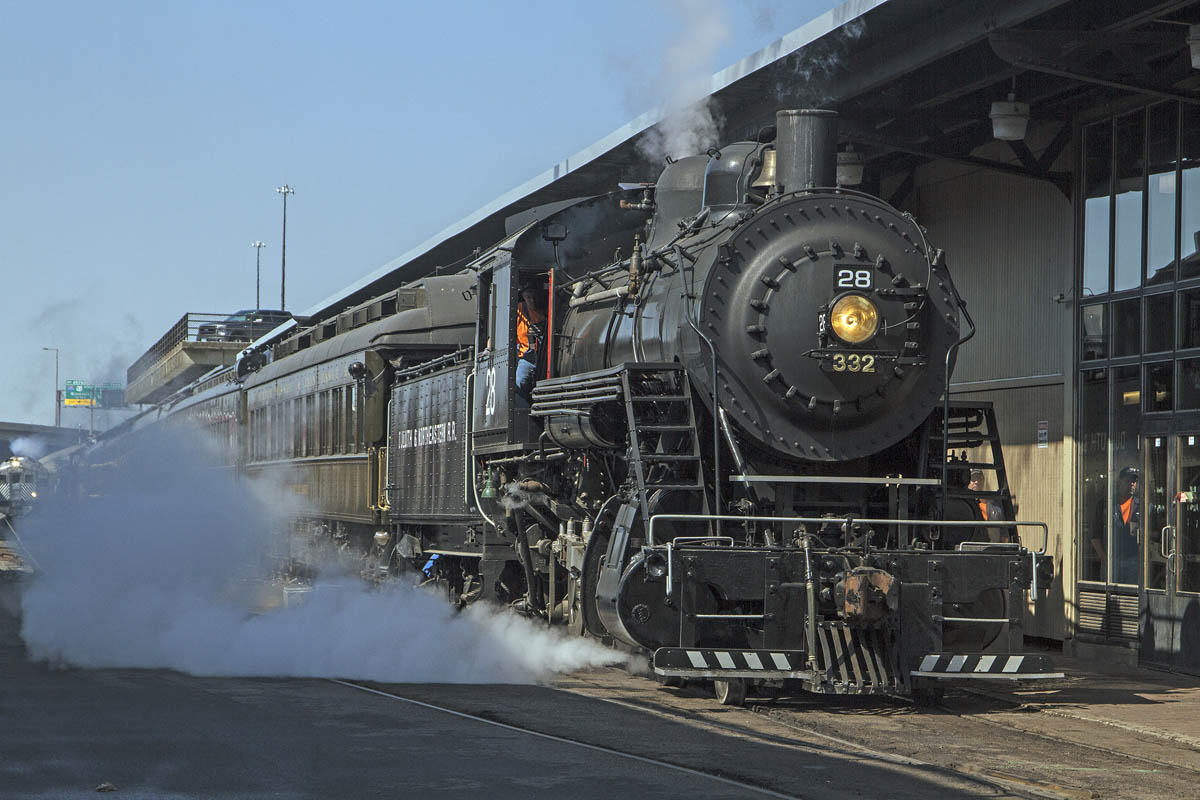“2018 was a challenging year for the Lake Superior Railroad Museum in that we undertook a lot of projects,” LSRM Executive Director Ken Buehler tells Trains. “Some were on the North Shore Scenic Railroad, others were strictly in the museum. The big project for the museum was finishing Northern Pacific (2-6-2) No. 2435’s four-year cosmetic restoration. It was a major accomplishment, and it is now on display in the museum. But it was also was taking up space in our shop. Now because it is complete we are going to have more shop space available to do projects in 2019.”
On the North Shore Scenic Railroad several projects were completed. “We added a new power-baggage car, finished our dome car project (ex-Burlington/California Zephyr Silver Club) and completed restoration of Duluth, Missabe & Iron Range coach 33 in time for its 100th anniversary,” Buehler says.
All that work “pushed us right to the limit as far as what we can accomplish with our volunteer base and our small staff, ” he says. “We expended a lot of resources financially. Our plan this year is to find ways to maximize our efforts in a way that allows us to regroup a little bit financially. Our goals for 2019 are, as always safety, and fiscal responsibility – finding ways to keep the money we make for things we need, as opposed to farming things out to get a bunch of projects done.”
This year’s projects include continued development of a plan to display the huge James C. Seacrest O scale model of the Duluth, Winnipeg & Pacific Railway, which the Seacrest family donated to the museum, expanding Knife River, halfway between Duluth and Two Harbors, as a “destination” location for the North Shore Scenic Railroad, and museum programming. “But our biggest goal, which will help all of these projects, is to have the highest degree of customer satisfaction,” Buehler says.
The big challenge in 2019 is the fiscal responsibility component, Buehler says, “In 2018 we got a lot of stuff done, but all these things were very expensive. I think 2019 it is going to be a rebuilding year from a fiscal aspect.”
The new year will also see a change in destination for North Shore Scenic Railroad trains. The railroad’s popular evening Pizza and Music Train travels from Duluth 16 miles to Palmers, because that’s where there is a siding allowing motive power to run around the train. For the past few years, the railroad would store cars on its sidings in the winter months, which provided additional income for the railroad. Now North Shore Scenic has a new contract for car storage and an agreement with the regional railroad authority that owns the line to store cars in the summer months. This will likely fill the siding at Palmers with storage cars.
This season North Shore Scenic plans to run a “push-pull” operation with trains continuing an additional 3.5 miles past Palmers to Knife River. This will offer rides over two more large bridges and provide additional views of Lake Superior. “For customers it’s a positive change since the train will be moving just about all the time instead of the long stop at Palmers to run around,” Buehler says.
Buehler says 2017 was phenomenal year for all Duluth tourist attractions, with good weather and a visit by vintage Tall Ships drawing visitors. “We had 105,000 guest/passengers in 2017. But 2018 was not as good, with 101,000 guest/passengers, but still a good year for us. Where we saw some softening was in Thomas the Tank Engine passengers,” he says.
Needed repairs kept Duluth & Northeastern 2-8-0 No. 28 in the shop in 2018, but the museum is planning to return it to service this year. No. 28 is scheduled to operate June 14-15, July 12-14, and on weekends Aug. 9 to Sept 15.
For information on the museum go to lsrm.org. For information on the North Shore Scenic Railroad go to www.northshorescenicrailroad.org.















NRHS Heritage Grant Program
Tom E. Dailey Foundation, Inc.
The John H. Emery Rail Heritage Trust deadline is Feb. 1st, 2019.
AMAZONSMILE
It’s always refreshing to read about the success of railroad museums that are professionally managed and include sound plans for the future.
I’ve often wondered though, why railroad museums haven’t considered merging (not unlike their prototype counterparts have) in order to combine the best of both worlds which in turn would also help lower overall operating costs at the same time. In this case, a merger between the Lake Superior Railroad Museum and Minnesota Transportation Museum seems like a natural.